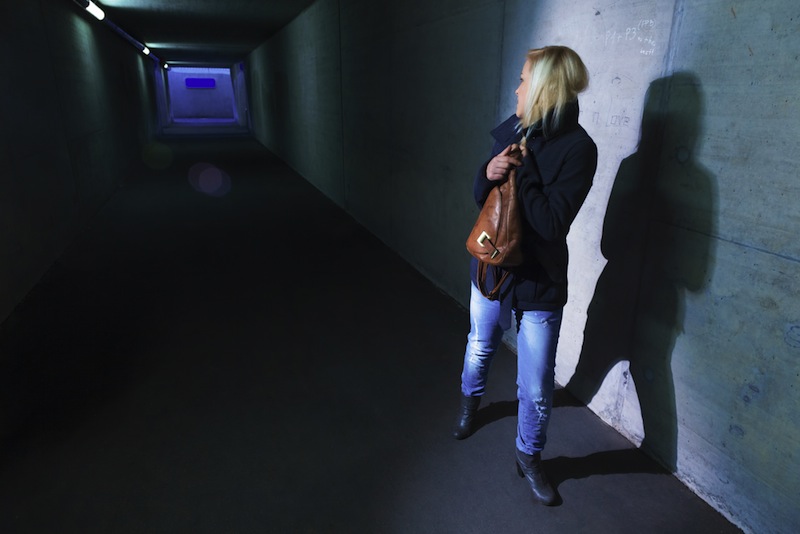The Science of Preventing Sexual Assaults on College Campuses

This story was updated July 7 at 5:40 p.m. EDT.
The recent Stanford sexual assault case is just one of tens of thousands of such assaults that happen every year on American college campuses, which raises the question: What can men and women do to stop rape at universities?
The federal government took one step in 2013, with an update to the Violence Against Women Act (VAWA) that requires colleges receiving federal aid to annually report to the government the number of assaults on their campuses, and to have programs on rape awareness and systems to assist victims. [6 Ways Sexual Harassment Damages Women's Health]
"This is a first step, putting policies in place," said Yolanda Moses, a professor of anthropology at the University of California, Riverside. "But the cultural question is, 'Why do we need these policies? Why is this a perpetual problem?'"
To prevent assaults on campuses, programs should begin when kids are still in elementary school, several sociologists told Live Science. Young children should be taught about consent, they said.
For instance, "You only pet the kitten when the kitten wants to be petted; and you only hug your friends when your friends want hugs; and you only knock down your sand castle when everyone who built the sand castle consents to knocking it down," said Tal Peretz, an assistant professor of sociology at Auburn University in Alabama. "That creates this culture where you only engage with people in ways they consent to."
If such behavior is taught early on, then, ideally, children will intuitively understand that it's not OK to have sex with someone unless they clearly say "yes," Peretz said.
Get the world’s most fascinating discoveries delivered straight to your inbox.
A rape awareness program based on this idea, called "Yes Means Yes," has made headway: California, New York and Illinois have some form of affirmative consent laws for college campuses, and several other states have introduced bills, according to Affirmative Consent, which tracks legislation.
And other programs encourage college men to think about their responsibilities. For example, a program at the University of California, Riverside, tells men not only to not harass or assault other students, but also to stop these situations from developing, such as by standing up to anyone planning to commit an assault.
Men and women can also be taught to intervene, as the two Swedish bicyclists did in the recent case at Stanford, said Patricia Yancey Martin, an emerita professor of sociology at Florida State University. The two men saw the assault occurring near where they were cycling, and physically stopped the perpetrator. However, education programs about these ideas would be more far effective if they were begun long before children reached college, the sociologists said. [Fight, Fight, Fight: The History of Human Aggression]
Sexual objectification
Another part of the campus sexual assault problem is that some rapists view women as sexual objects. Changing this perception could help men perceive women as individuals, instead of objects that fulfill sexual desires, which could help change some men's idea that these assaults are permissible, Moses said.
And women could fight against the culture that makes some assaults seem permissible by increasing their self-agency, or their awareness of the control they have over their own thoughts, decisions and actions, she said. Rather than aiming to make themselves desirable to men, they should focus on their own feelings of what sexuality means, she said.
Moses recommended reading "Girls & Sex: Navigating the Complicated New Landscape" (Harper, 2016), by Peggy Ornstein, or looking online to find guides and blogs that advise how to talk with boys and girls about sex, sexuality and consent.
It may seem impossible to change a culture that makes assault seem permissible, but it's certainly feasible to change factors that make such a culture, Peretz said.
"There's really interesting research that's been done in prisons, for example," he told Live Science. "It turns out that there are prisons that have very high rape rates, and prisons where it's essentially nonexistent, it doesn't happen."
"This shows us that we can change the structures and cultures of an institution to make rape more or less likely," Peretz said. [Wonder Woman: 10 Interesting Facts About the Female Body]
Elevated risk
It's difficult to assess how many women experience sexual assault. One report, based on a survey of about 5,400 women at two large public universities, found that about 1 in 5 women reported experiencing an attempted or completed assault since entering college, according to a 2007 report submitted to the National Institute of Justice.
The fact-checking site Politifact examined this statistic, and noted that the survey's sample was small and not representative of all colleges in the country, but that "the overall findings in the study were on par with similar surveys conducted over the years that have measured sexual assaults on campus."
Still, rape is underreported; according to the VAWA database from 2014, the most recent year with data, there were about 16,700 VAWA offenses at roughly 7,000 institutions, according to the U.S. Department of Education. That equates to about 2.4 offenses per institution, when likely there are many more, the sociologists said.
Statistics on campus assaults may point the way to how prevention efforts might be better targeted, Moses said. For example, a 2007 report prepared for the National Institute of Justice found that assaults were more likely to happen during the first few months of school — in September, October and November. They tend to occur on Friday or Saturday nights, between midnight and 6 a.m.
Often, campus rapes occur in conjunction with fraternity parties, as the Stanford rape case did. These parties have several features that put people at risk for rape, including loud music (making it too loud to talk), low lighting (making it difficult to see and keep track of female friends) and easy access to alcohol (drinking can leave people unable to make sound decisions, or even unconscious), according to a 1996 study published in the journal Gender and Society.
Thus, some prevention efforts are aimed at changing what happens at such parties. For example, a program called the Girl Code Movement calls on partygoers to be aware of what's happening around them, which can help stop sexual assaults from happening. A culture where people feel responsible for others makes it more likely they will step forward when they observe something nonconsensual happening, the sociologists said.
In addition, sometimes it's clear that a certain man is perpetrating assaults.
"The bad guys, they're not secretive about it, they're proud of it, really," Yancey Martin said. "It's not rare that they often seek less attractive girls who are flattered by the attention." Such men may commit multiple assaults, she said. If other people are aware of these assaults, prevention could be a matter of making sure these people are motivated to come forward. [9 Ways Going to College Affects Your Health]
Which prevention efforts work?
It's hard to measure the effectiveness of assault prevention programs, but one in Canada had encouraging results, with a reported 50 percent drop in rape cases, according to an article on that program published in 2015 in the New England Journal of Medicine.
The program involved 400 women who participated in lectures, discussions and review classes on rape prevention. Another 400 women were given brochures on preventing sexual assault.
After one year, about 10 percent of the women in the brochure group reported that they had been raped, whereas about 5 percent of the women who participated in the rape avoidance program reported being raped.
It's unfair, however, to ask women to be in charge of rape prevention, Peretz said.
"We have far too much 'here's how you protect yourself' [programs], when it's not women's job and not their fault," Peretz said. "That whole way of talking about it really places the blame on women, when it should be on the rapists."
More male college students should spend time thinking about how they may be supporting rape culture — either intentionally or inadvertently — and what they can do to stop it, he said.
"That could even start with telling the women in their lives, 'If anything happens I believe you, I'm here to support you,'" he said.
Assault prevention efforts could also aim to separate drinking from having sex. Campus cultures where the two are inextricably linked promote the idea that the point of drinking is to have sex. From there, the idea shifts, and students may start thinking that "and it doesn't matter whom you have sex with, what their level of intoxication is or if they're interested," in having sex, Peretz said.
There are also ways to, after one assault, to work to prevent future assaults. Men who commit assaults may get away with it for many reasons — including others who immediately cast doubt and blame on victims, he said.
The guys who say, 'We would never do that,' they still make rape jokes and don't believe women who say they've been raped, or won't give a guy a strong sentence," Peretz said. If society works together to change that mindset, then much like the prisons that have few rapes, college campuses might one day be a safer place for women, he said.
Editor's Note: This story was changed to update the sources that report the rate of sexual assaults on campus.
Original article on Live Science.

Laura is the managing editor at Live Science. She also runs the archaeology section and the Life's Little Mysteries series. Her work has appeared in The New York Times, Scholastic, Popular Science and Spectrum, a site on autism research. She has won multiple awards from the Society of Professional Journalists and the Washington Newspaper Publishers Association for her reporting at a weekly newspaper near Seattle. Laura holds a bachelor's degree in English literature and psychology from Washington University in St. Louis and a master's degree in science writing from NYU.




